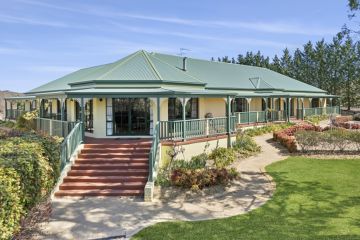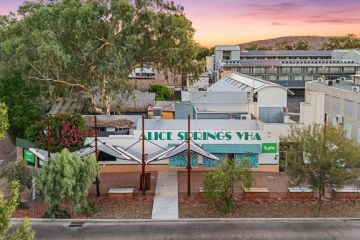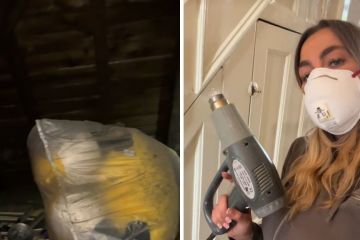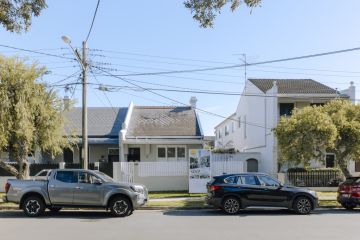Canberra's character a delight to preserve
Canberra’s historic homes, with their red-brick facades and cottage gardens, add a touch of fairytale whimsy to the city’s suburban fringe.
Sash windows, timber details and fireplaces complete with mantelpieces are some of the characteristics of these older homes, and these classic features are popular with buyers.
There’s a level of prestige that comes with Canberra’s historic and heritage-listed homes, but the city’s early settlers weren’t always impressed with their new accommodation, architect Philip Leeson says.
“Canberra houses are pretty simple, and they were built at a time when there wasn’t a lot of money around. They were built by the government, so they weren’t bigger than they had to be. They didn’t have the grand entry halls and large bedrooms that were being build in Sydney and Melbourne. A lot of public servants were disappointed at how modest the homes were.”
Leeson and the team at Philip Leeson Architects run the ACT’s Heritage Advisory Service. The free service was designed to provide advice to to those who own or are considering buying a heritage home.
Many of the features that Canberra’s first residents found unappealing lend themselves beautifully to modern lifestyles and sympathetic transformations. While the front of the property needs to be retained, the small cottages provide ample room at the back for open-plan living that spills into the large backyards.
The neighbourhoods paint a picture of the city’s past, when there was a strong divide between Canberra’s social classes, Leeson says.
“The prestige homes start in Forrest, Red Hill, Deakin and Reid. There was a strong delineation among people coming to Canberra. The working class and the builders lived in tiny cottages in Ainslie or Braddon.”
Whether in one of the original prestige suburbs or a former working-class neighbourhood on the edge of the city, heritage-listed homes generally attract a premium price tag, Luton Properties Dickson agent Holly Komorowski says.
“They are very sought after. Certainly the history and the stories that these homes have to offer, combined with the character features, are very attractive. People who value the heritage appreciate that the area that they’re buying into is protected.
“In evolving inner-city areas, the streetscapes are changing, and people do seek these sorts of properties, because they know the precinct around them is going to remain. The zoning is RZ1, and that is attractive because you know it’s not going to become high density.”
Older properties are also scattered around the ACT’s border, with the original homes of Yass and Queanbeyan attracting a range of buyers.
LJ Hooker Manuka agent Dianne Frame says many buyers love the idea of experiencing a bygone era, and they fall in love with some of the homes’ older features.
“People really love seeing the way their ancestors lived. What we have is so easy now. You just flick a switch for electricity and turn on a tap for water. In the 1800s, they didn’t have any of the conveniences we have now. They had to chop wood for warmth and boil water over the fire.”
Ms Frame is selling the historic Old Linton property in Yass, and she says the house’s original features have been a hit with those inspecting it.
Buyers of historic properties should keep in mind that they take on a responsibility when they purchase the bouse. “They need to remember that there’s history attached to these homes,” she says.
“If you buy a home of an age like this, you become the caretaker of the property and you need to look after it for future generations. These homes offer a glimpse of what our ancestors went through to give us what we have now got.”
Heritage property facts
Residential precincts are heritage listed to protect the character of the streetscape, scale of the built environment and landscaping elements of Canberra’s older neighbourhoods.
- About 1.3 per cent of ACT properties are heritage listed and guidelines are in place to retain these values.
- Listings allow sympathetic development of the property. Upgrading kitchens and bathrooms for contemporary use generally requires no advice or intervention from the council.
- Usually only changes affecting the exterior facade require approval. Changes to the rear of the home are typically approved.
- Smaller work at heritage-listed places, including most gardening, interior alterations and basic maintenance, does not require approval.
- No approval is needed to sell or lease a heritage-listed property, but it is the real estate agent’s responsibility to notify buyers of any heritage listing that applies.
- Renovators should talk with ACT Heritage or the Heritage Advisory Service early in the process to avoid delays and enhance design outcomes.

Historic cottage goes under the hammer
John Matthews, pictured, and Neil Rodgers’ home is rich in character and history.
The Elimatta Street cottage is one of Canberra’s oldest properties and it has been beautifully maintained for almost a century.
It’s one of the original homes of the Ainslie Cottages Project, which were constructed during 1921 and 1922 to house the city’s early builders.
“You can build as many houses as you like in the suburbs, but this one is irreplaceable,” Matthews says.
“When we bought the home, the fact that it was set in a heritage area was attractive. The character of the area is preserved and you will never have a double storey mansion built next door.”
When John and Neil moved into the Braddon home in 2002, it had already been sympathetically extended. The couple then added a walk-in wardrobe and en suite to the main bedroom, as well as a fireplace to the living room.
The renovated home seamlessly combines the old with the new. Open-plan living spaces flowing onto the terrace make this home a modern entertainer, while French doors, original timber detailing and high-battened ceilings lend a classic elegance to the interiors.
Outside, the keen gardeners have created enchanting grounds with established trees, rose bushes and camellias.
Neil, a doctor, has started a new job in Dunedin, New Zealand. The property is set to go under the hammer on Wednesday.
Number 57 Elimatta Street will be auctioned on Wednesday, March 9 at 6pm, onsite. Phone Luton Properties Dickson agent Holly Komorowski on 0434 973 987. EER: 1. Price guide: $1.1 million+. Inspect: Saturday, 10-10.45am, Monday, 5.15-5.45pm and Wednesday, 5.30-6pm
Mansion seeks new dance partner

Old Linton, 22 Glebe Street, Yass
Price by negotiation
A property like Old Linton is a rare find in the Canberra district. There are 46 rooms, 10 bedrooms and a ballroom that can seat 100 people.
After a recent makeover by the LifeStyle channel’s Selling Houses Australia, the 160-year-old property has been refreshed, restored and is ready for sale.
Selling Houses Australia host and property expert Andrew Winter recently told The Canberra Times that the team hopes the heritage-listed mansion will appeal to someone with “a little bit of commercial foresight”.
He says the Old Linton would be ideal for a home combined with a conference, accommodation or wedding venue.
Situated on a two-hectare parcel, the residence was built in 1857 by an emancipated convict and was later home to legendary sheep baron Arthur Bryant Triggs. It has since operated as a war veterans’ home, a wedding venue and a private residence.
The Old Linton would be an idyllic bed and breakfast or the perfect fit for weddings and large, formal occasions. In addition to the 10 bedrooms and 10 bathrooms, there is a self-contained three-bedroom cottage, stables with a loft, a glasshouse and a machinery shed.
Prior to the Selling Houses Australia makeover, the Old Linton was on the market with an asking price of $3 million. The elegant transformation is expected to attract renewed interest in the property.
The double episode will air on Foxtel’s LifeStyle channel in late April.
The Old Linton is for sale by negotiation through LJ Hooker Manuka agent Dianne Frame. Phone 0411 092 990. Inspect: Sunday, noon to 1pm.
We recommend
We thought you might like
States
Capital Cities
Capital Cities - Rentals
Popular Areas
Allhomes
More







